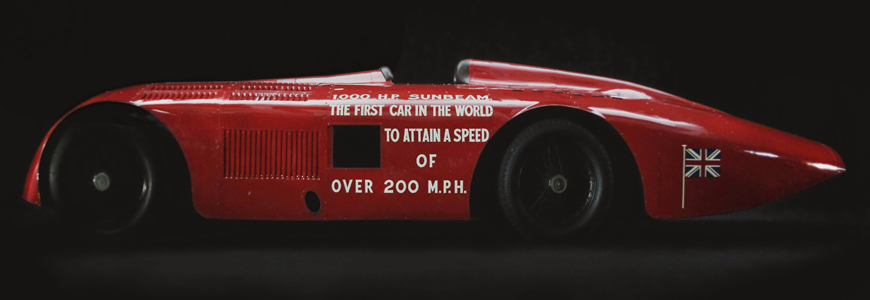
To celebrate the 90th anniversary of the Sunbeam 1000hp breaking the 200mph Land Speed Record, the National Motor Museum will be breathing new life into one of its engines to make it run for the first time in over half a century.
The restoration project will begin in time for the anniversary on March 29th, with an engine start-up planned for later in the year at Beaulieu.
The 1927 Sunbeam’s two 22.5-litre V12 aero engines, which each produced 435bhp, are in a perilous condition, with internal corrosion having caused severe damage. By painstakingly rebuilding the rear-mounted engine, using specialist knowledge and bespoke parts, the National Motor Museum engineers will recapture the sounds, sights and smells of this ground-breaking machine and help to preserve it for future generations.
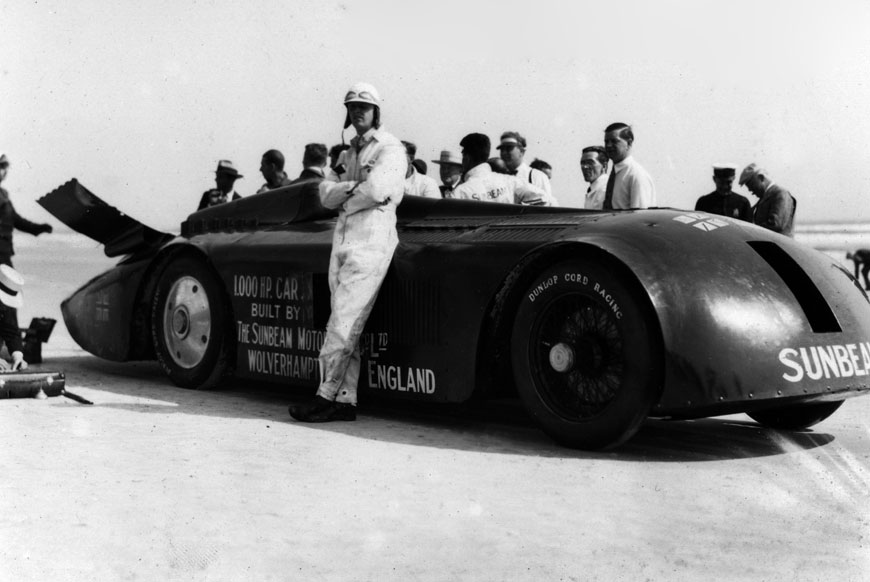
WORLD LAND SPEED RECORD
Designed and built solely to break the 200mph barrier, the Sunbeam 1000hp was once the fastest car in the world. On March 29th in 1927, an estimated crowd of 30,000 spectators gathered to watch Major Henry Segrave set a new World Land Speed Record by driving the iconic car at an average speed of 203.79mph at Daytona Beach in Florida. They stood in the nearby sand dunes to watch the high-speed runs along the beach.
In order to set the record, Major Segrave was required to complete two runs. Strong winds on the first outward run caused the car to skid violently, forcing him to drive into the sea to slow the car down. He was still able, however, to make the return journey. The speeds achieved on the two runs were 200.668mph and 207.015mph, giving an average speed of 203.792mph over the mile and setting a new Land Speed Record – the first over 200mph.
For footage of the Sunbeam’s record-breaking runs, go to Beaulieu’s YouTube channel, www.youtube.com/user/BeaulieuHampshire. Choose to watch the one-minute clip or the full version.
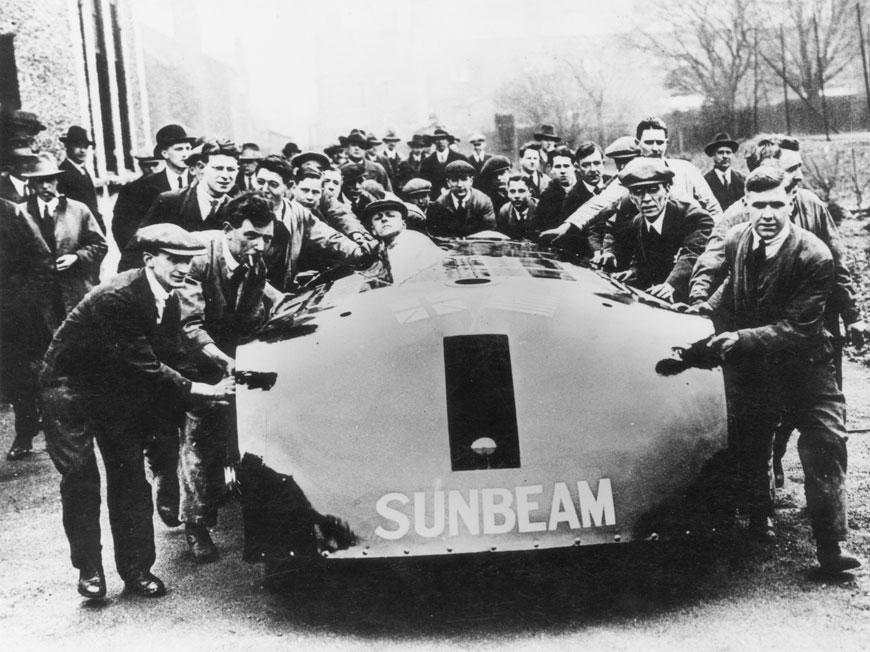
ULTIMATE POWER
This remarkable achievement was due in no small part to the Sunbeam’s two colossal V12 engines. To generate enough power to reach such high speeds, two Sunbeam Matabele V12 aero engines were chosen for the bespoke design by Sunbeam Chief Engineer Louis Coatalen.
Each 22.5 litre unit produced 435bhp and the two could be coupled together for ultimate power, driving the rear wheels through a three-speed gearbox and chain drive transmission. The driver’s cockpit was positioned in between the front and rear engines. There might not have been the full 1000hp that the car’s title suggested, but it was an immensely powerful machine. The total weight of this massive car was well over 3 tons, while its unique streamlined bodywork earned it the affectionate nickname ‘The Slug’.
However, these engines haven’t been run in over half a century. Worse still, moisture has got into both units, wreaking havoc with their finely engineered components. “Upon inspection, it was clear that the engines were corroding from the inside out,” said the National Motor Museum’s Senior Engineer Ian Stanfield. “Left untouched, in ten years’ time they would have deteriorated to the point when they couldn’t be rebuilt. I wasn’t prepared to let that happen.”
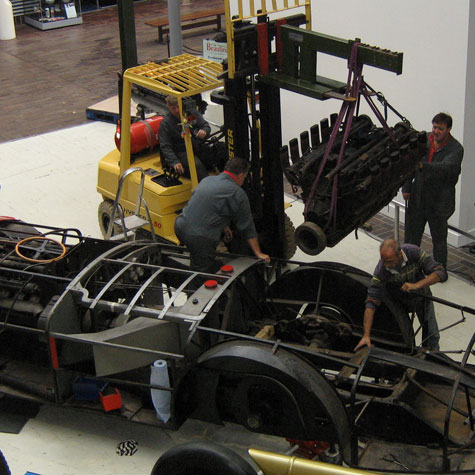
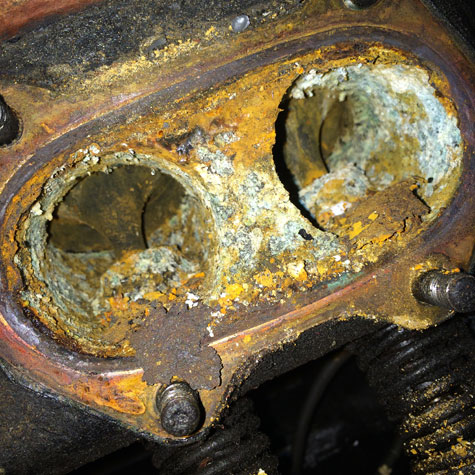
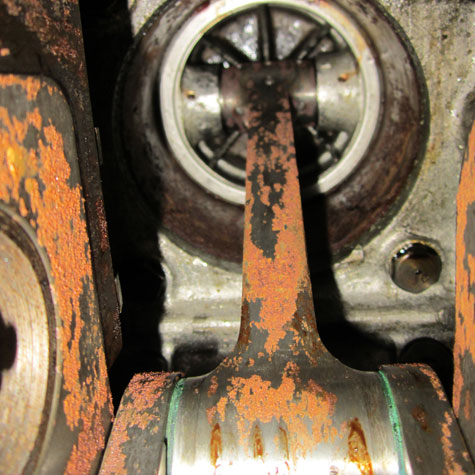
The first step of this challenging project was to remove each engine from the Sunbeam. With the body panels removed, a fork-lift truck was used to lift the colossal units clear of the car’s structure. Now work can begin to strip-down the rear engine and discover the true extent of the corrosion damage.
Old machines can be unpredictable in terms of the problems they present, not least of all high-performance engines which have not been used for decades. Who knows what other problems will be encountered with the restoration of this V12 engine?
As the National Motor Museum workshop engineers turn back the clock, follow the next chapter of the restoration story which is coming soon.
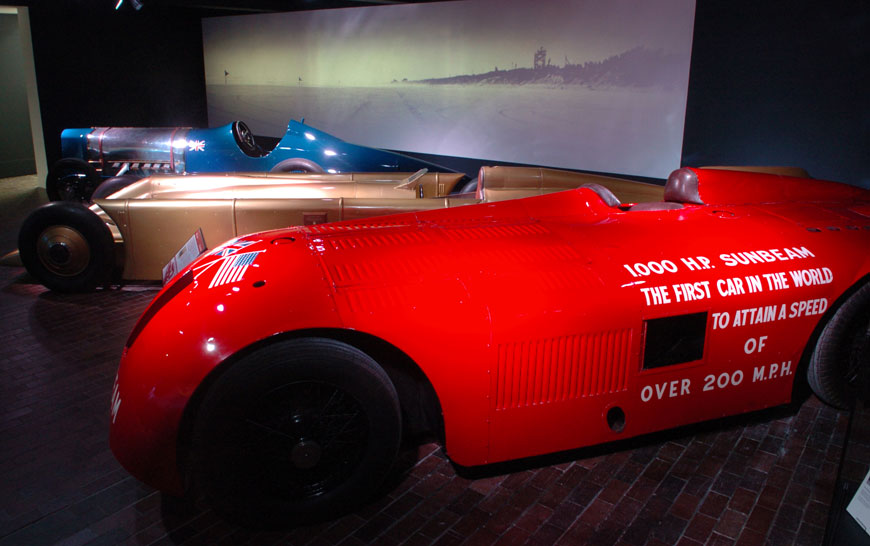
For Britain and For The Hell Of It
The Sunbeam 1000hp went on display at Beaulieu in the Montagu Motor Museum, the forerunner to the National Motor Museum, in 1958 on loan. It was purchased by Edward, Lord Montagu in 1970 and now proudly sits at the heart of the For Britain and For The Hell Of It display in the museum.
The display features some of the world’s most iconic Land Speed Record breakers. The 1920 Sunbeam 350hp made a commemorative run at Pendine Sands in 2015 on the 90th anniversary of its 150.77mph World Land Speed Record. The distinctive 1929 Golden Arrow paved the way for two decades of unbroken British success after Major Segrave sat at the wheel to set his 231.36mph World Land Speed Record when he returned to Daytona in March 1929. Donald Campbell broke through the elusive 400mph barrier to set a new record in 1964 in Bluebird CN7 at Lake Eyre in Australia. All of these stunning cars are on display to fire the imagination of visitors.
